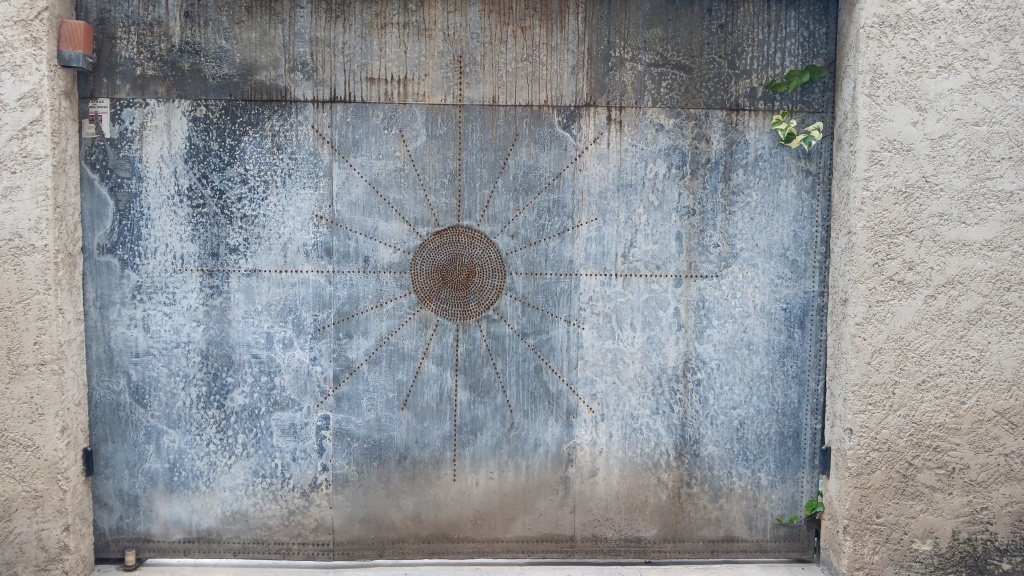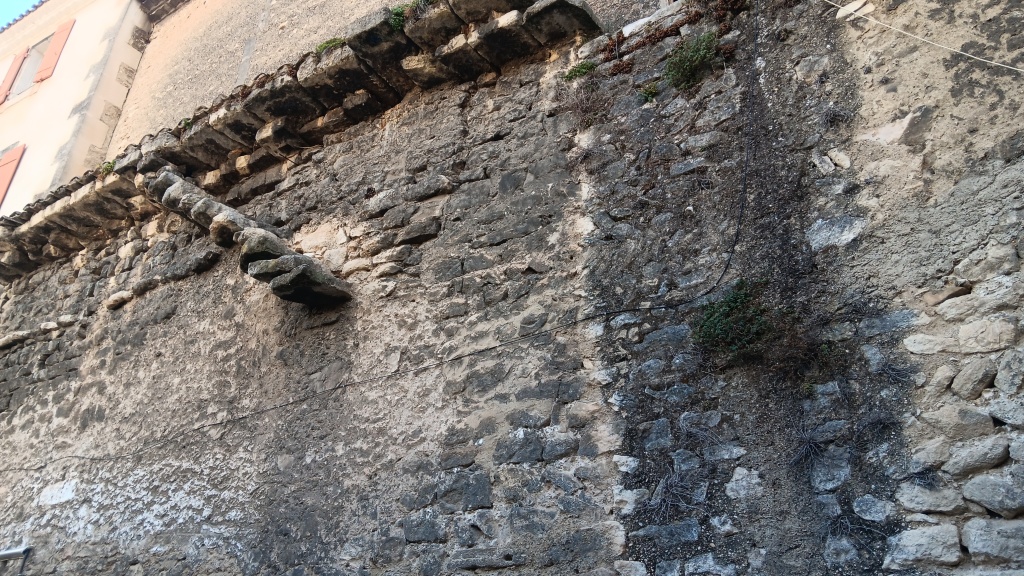I have become a flat-out café mocha addict over the past couple of years, and when we were preparing to travel in the continent of cafes, I went so far as to bring my thermos so as to avoid littering Europe with any more disposable cups than necessary. I planned to try mochas in every locale and make a serious comparison. Who would deliver the best mocha? Italy, originator of the cappuccino and the espresso? Switzerland, world chocolate king? I looked forward to finding out, one delicious coffee drink at a time.
The winner of the contest is . . . no one. Mochas are very seldom on offer in any cafe in any of the places we’ve been. In Venice, I found one cafe with caffe mocha on the menu (Ten Thousand Coffee, if you happen to be headed that way) and so I went there twice. But most of the time, when the coffee craving hit, I was far from there, and so I started ordering caffe latte, which I have come to like if I add enough sugar, though it is no substitute for that coffee-chocolate combo.
The no-mocha trend continued through Slovenia, Austria and Switzerland. During my afternoon at the Zentrum Paul Klee in Bern, on a stretch break from drawing and writing, I meandered to the cafe at the far end of the museum, and lo and behold, they had mochas on the menu. Murphy’s Law; I had had a lovely Indian lunch, including chai, and I was not the slightest bit hungry or thirsty, so even though it was a wrench to walk away from the opportunity, I declined to choke down a mocha I didn’t want.
Coffee shops are different here in other ways. Coffee is usually available in just one size, and that size is very small. No matter what kind of coffee I’ve ordered (au lait / latte, café creme, macchiato), it has been strong enough to, as my father would say, “put hair on your chest.” “Flat whites” are a widespread phenomenon, but as I haven’t been able to discover a discernable difference between them and cafe lattes, I haven’t tried them. I’ve learned to say “decaf” in three languages and mostly gotten it when I asked, but it is almost never listed; nor are non-dairy milks. Every café has hot chocolate. They just don’t mix it with the coffee.
My thermos is too tall for the machines, and it would defeat the purpose to have someone make me a drink in a paper cup and pour it into my thermos, then toss the cup, so I mostly don’t carry it around with me. However, in Paris, where we shopped extensively since we were in one apartment for two weeks, I bought cocoa and instant coffee and reverted to my home practice of making ye olde cheap-a$$ instant (I started doing that during the pandemic, keeping a jarful of homemade dry mocha mix in the cupboard: just add hot milk). A couple of times, I filled my thermos halfway with the chocolate part, then ordered a small coffee from the boulangerie on the corner, along with a roll. Even though it was au lait, even though it was mixed with another eight ounces of oatmilk that I had put in at the apartment, that sucker was strong.
We are now in Arles, in Provence, and yesterday was the big marché day. It’s close to 2 km long and has two double-sided aisles, one of dry goods and one of foods, but we were most of the way along before I discovered a coffee stand, off to one side in the town square. As I waited in line, watching people leave the counter with their tiny glasses in hand–no more than 6 oz in a glass, and of course smaller for an espresso–I decided that this was the moment to make my move. I ordered a café au lait and a chocolat chaud and took them away with me to the bench where Joy watched, bemused, as I poured a bit of the first into the second. Every time I drank a few sips of the resulting mix, I added more coffee to it, until I had one cup of a perfectly mixed, not-too-sweet mocha.
Chocolate! Coffee! Someone could make a mint marketing this combination in Europe.
So, Provence. It’s beautiful. Arles is the town where Van Gogh lived for just a couple of years, incredibly productive ones; he made something like one painting a day on average, even though he had a breakdown and spent time in two different hospitals. One was in St.-Rémy, which, Joy identified later, was why the name of town was so familiar to us, sadly. It is now unbelievably posh. We enjoyed walking its streets just the same–the beauty of these buildings is unaffected by the riches or poverty of their temporary tenants.
St.-Rémy was–is–on the Via Domitia, a road the Roman government built in their new province in order to connect their already-existing ones in Italy and Spain. The Roman city of that time and place, Glanum, is an archaelogical site that didn’t appear to be open to visitors, except for the spectacular Mausoleum and Triumphal Arch, collectively known as Les Antiques, just off the road outside St.-Rémy.


I saw a lot of Roman ruins when I was 12 and my family spent several weeks in Israel. A lot. My sister hit her limit one day and referred to whatever 1st-century site we were seeing as “A pile of rocks,” so it instantly went into the family joke collection: “What are we doing today?” “Going to see another pile of rocks.” I thought that I might still have Roman-ruins fatigue all these decades later, because I looked at the things to see around Arles and sighed internally. Amphitheaters, yeah, aqueducts, yeah yeah, arches, yawn. Well, you know what? It is still hella cool to put a hand on these stones and consider that someone built these things two thousand years ago.
We had passed a sign to the aqueduct on the drive between Arles and St.-Rémy, so on the way back, we followed the signs. We were almost past where it must be, and were saying, “We couldn’t miss an aqueduct, could we?” when we drove right through it.
We pulled over immediately and hopped out to walk along the remains of the aqueduct. It’s so old that the graffiti is my parents’ age. That was the oldest dated graffiti we saw; I’m sure it’s not the oldest there.


I realized a few days ago that I have never really understood aqueducts. Were the arches themselves conduits for water, i.e, did the water run under the arches? And if so, what good did that do? Joy thought that there were pipes running longways through the structures, and that the arches were just a strong, efficient support for very long pipes. The photo on the right confirms her hypothesis. The tops have broken off, so what was a pipe looks like an open channel, but when they were in operation, the tops were enclosed. Of course you wouldn’t want to build a solid wall for miles and miles unless you actually wanted to wall something in or out; but the structure had to be strong; the arched structures were the solution.
Before our conversation, though, I looked up the question online. One of the top hits was Britannica, which did not answer my question, but did give an object lesson in the persistence of bias.
“Although the Romans are considered the greatest aqueduct builders of the ancient world, qanāt systems were in use in ancient Persia, India, Egypt, and other Middle Eastern countries hundreds of years earlier.”
britannica.com/technology/aqueduct-engineering
Who is it who considers the Romans the greatest? Does the author mean that they consider the Roman system the greatest, and if so, why not assert it and back it up with facts? That passive voice is a way to make an assertion while claiming not to be making one.
I never learned about any of those prior aqueduct systems, only the Roman, i.e., the European ones. The British have more of an excuse for bias, since those ruins populate their land–it’s only natural for them to think “Rome” when they see aqueducts. But encyclopedia authors should deal in information, not opinion, especially unexamined opinion.
Something useful in that article: the big, visible aqueducts were only a small percentage of the entire water transportation system. Amazing.







Leave a comment
Comments feed for this article